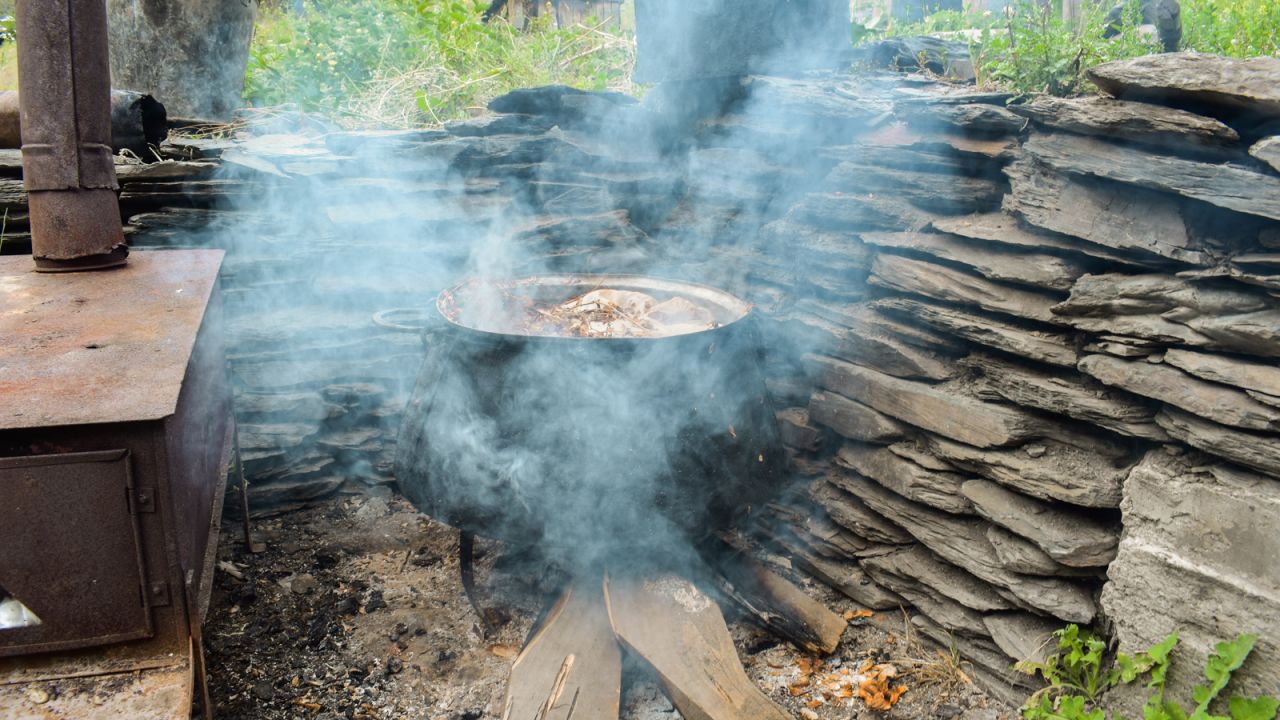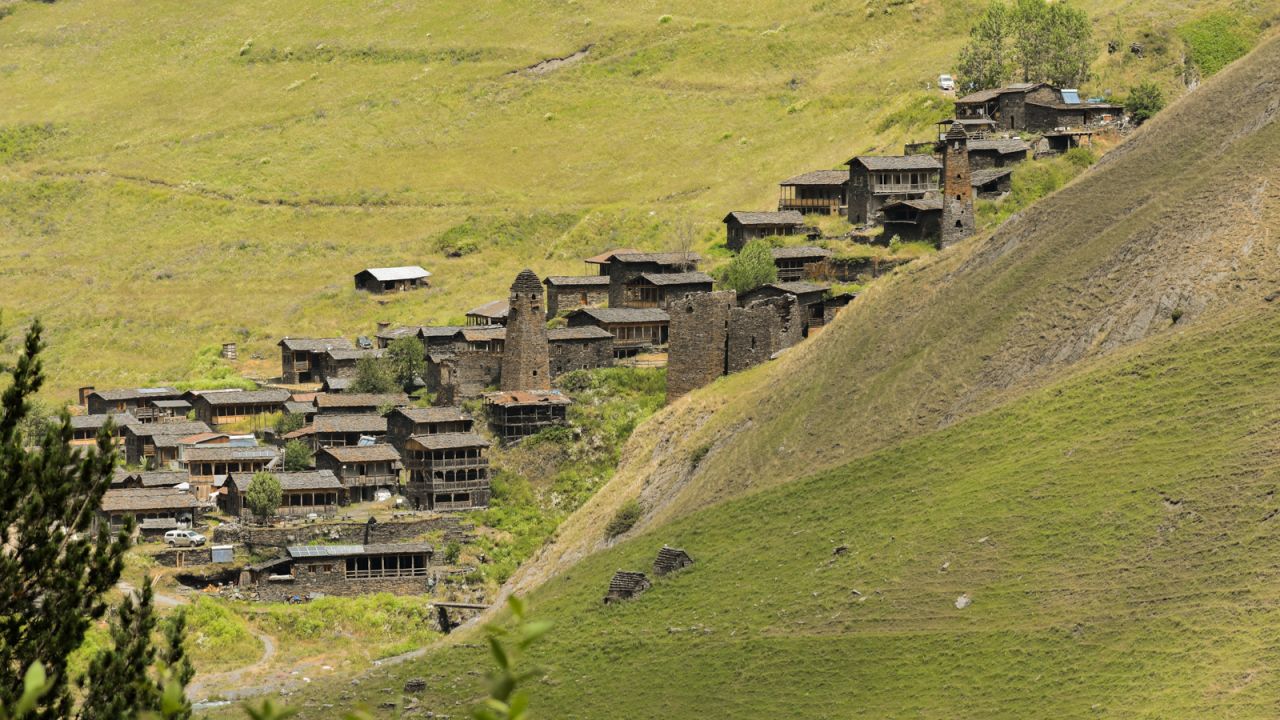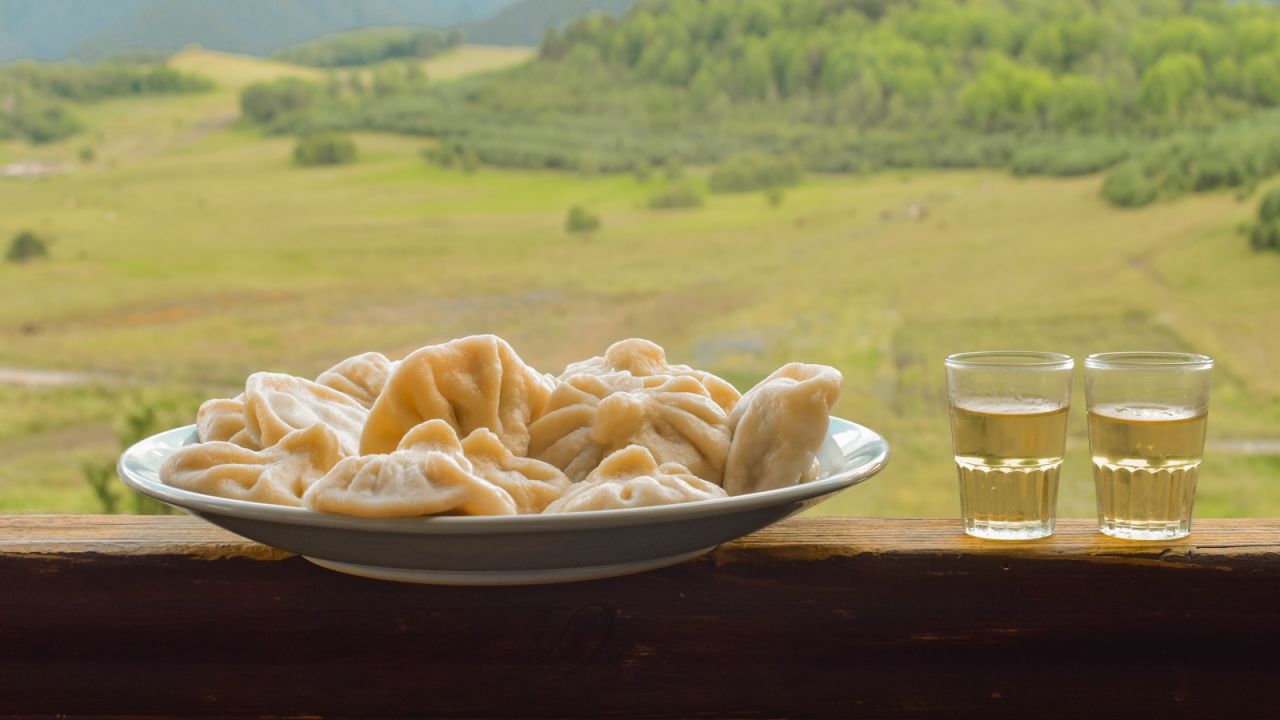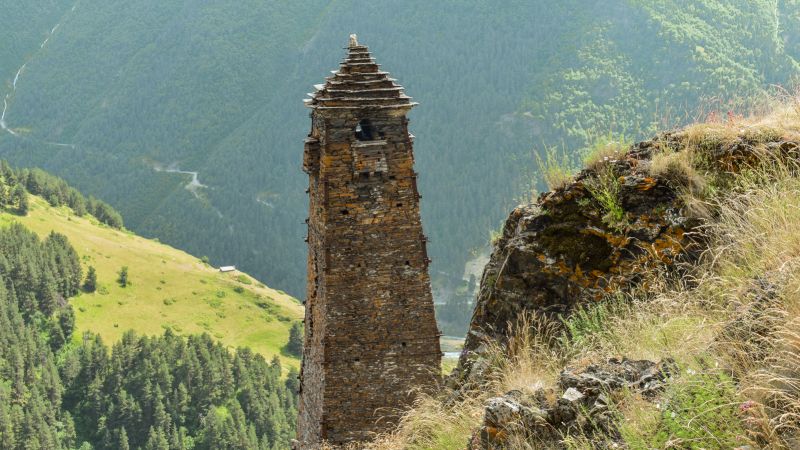CNN
—
A tiny wooden hut with smoke sprouting from its chimney sits at the base of a windswept hill dotted with lambs. Inside is a large iron cauldron, scuffed from centuries of use and smothered in flames. As its interior bubbles, mountain barley and wild hops are married together to create a delightfully sweet, sour and cloudy ale known as aludi.
Gathered around the cauldron is a group of men who’ve stood in this very hut every year on this very day for as long as they can remember. At the helm of it all is one specially elected shulta who oversees the sacred process. Brewing aludi together is part of their unofficial brotherhood and a hallowed preparation for the coming festival.
Soon this special brew will be used to mark the start of Atnigenoba, a two-week long festival in the northeastern Georgian region of Tusheti that’s filled with paganistic ram sacrifices, shrine worship, folk dancing and fiercely competitive horse racing.
Tucked away deep in the mountains dividing Georgia from its Chechen and Dagestani neighbors, Tusheti is accessed only by a long, narrow gravel road that climbs 10,000 feet above the gorges below.
It’s a wild, untamed treasure hidden on the frontier of Europe.
Pummeled with heavy snow throughout long winters, the tourist season is brief, with the region only accessible around 4-5 months of the year, but is a paradise for hikers looking to chart new territory.
Tusheti is characterized by its breathtaking landscape and lasting folk traditions, particularly in the way of art. Its strong history of shepherding means wool textiles reign supreme, especially cozy knitted house booties and elaborate carpets in bold geometric patterns.
Come October, only a handful of locals remain in Tusheti. Braced for a long and harsh winter, they’ll be entirely cut off from the outside world, completely marooned in the wilderness. Irakli Khvedaguridze is the only licensed doctor in the region who, at 80 years old, relies solely on his wits, his horse and a trusty pair of homemade skis to service medical needs all year round.

It’s not just the locals who make a mass-exodus every fall, either. Long before the road to Tusheti was built in the 1980s, the only way in or out was on foot or horseback – a reality local shepherds have known for ages.
As winter looms, flocks of tens of thousands of sheep led by lowland-bound shepherds begin their journey south where they will graze over sunny plains through the colder months. And by the first thaw of spring, they’ll begin the annual odyssey back to their homeland.
Shepherding is not only a primary source of income for Tushetian men, it’s also a means for connection to their land and heritage. As more and more Tushetians trade the peaceful yet primitive mountain lifestyle for more modern opportunities in Georgia’s capital city Tbilisi and beyond, traditional trades like shepherding have become a point of pride.
At the heart of the region is Omalo. Crowned by the Keselo Fortress and spread across meadows dotted with horses, quaint guest houses and the occasional screeching rooster, Omalo is the designated gateway to Tusheti.
It’s also here that many wilderness-starved hikers set off to complete one of Georgia’s most famous multi-day treks: Omalo to Shatili, a fortified medieval village deep in the Arghuni Gorge. The five-day trek connects Tusheti with neighboring Khevsureti, another isolated highland region and medieval treasure trove, via an old shepherd’s path.
Spilling out of the Pirikiti Valley onto the banks of the Alazani River, is Dartlo. Not far from Omalo, this slow and sleepy ancient hamlet is characterized by its defense towers and perfectly stacked stone houses. On the outskirts of the village, sits a shell of church ruins with shrubs bursting from its sandstone, its cream colored facade returning to the nature from which it came.
In a small clearing behind the ruins is a peculiar-looking set of stones; arranged in a half circle of 12, with an additional two in the center, what looks like a micro version of Scotland’s prehistoric Ring of Brodgar is actually a 15th-century courthouse.
This traditional court, known as Sabtcheo, was where accused criminals would be tried – their sentences often banishing them from the village, exiled to the Tusheti wilderness. Stranded on the slopes above Dartlo, the village of Kvavlo makes for an excellent (albeit steep) afternoon hike.

Situated on rolling green pastures with lazily grazing herds of cattle and humble homes with ornate wooden balconies, is Shenako. Towering over the tiny village is St. George’s Church, a detail that would be easily overlooked in the lowlands, but not in Tusheti. In a region where stone shrines outnumber churches by the hundred, St. George’s feels like a rare relic.
Reached from Shenako by a winding dirt road or an overgrown footpath through the dense woods spread over a mountain or two, is Diklo. Just a couple of peaks from the Russian region of Dagestan, the village’s hilltop ruins overlook the handful of shrines, lone shepherd huts and houses peppered across the landscape.
The very last house has a chipper, rosy-cheeked woman locally known as Masho Bebo (Grandma Masho) setting out fresh morsels of cheese to age on the rafters of her balcony. Dancing in the wind is a collection of colorful wool socks, hand knitted by Masho Bebo as keepsakes for tired hikers passing through the village.
Tushetian traditions and culture have been shaped by its extreme isolation and ancient superstitions. Arguably, nothing is more representative of Tushetian culture than the countless khati (stone shrines) and salotsavi (sacred spaces) strewn across its landscape. Carefully laid stone piles adorned with animal skulls and long, curled, bovine horns can be found just about everywhere. Some allow women, many do not, but all are revered for the deity they symbolize.
Tusheti toes the line between orthodox Christian and local pagan traditions with a pronounced emphasis on the departed. Near the end of August each year is Mariamoba – a holiday dedicated to both Saint Mary and deceased loved ones. It’s a time to set the table for those no longer here, both in the recent and distant past.
A few months later in December, those brave enough to stick around will gather to celebrate Mzebudoba, the solstice and precious winter stillness that will guide them into a fertile spring. Warmed only by their fiery hearths and crackling wood fire ovens, women across Tusheti prepare ritual cakes and breads such as kada and machkati that will serve as offerings to a medley of old gods, orthodox saints and departed ancestors. A single dish of khatvisi (a traditional shepherd’s dish of boiled curd and butter), coupled with a chalice of aludi, a few machkati and a lit candle must be placed in the window that receives the sun’s first rays.

While often forgotten, Kdini in January is when goblins and devils wreak havoc. Not unlike Halloween and Day of the Dead, Kdini is a time when the veil between worlds is thinned. But instead of carving jack-o-lanterns or creating colorful offerings, some locals take to the woods for sminaoba where they’ll eagerly listen for any familiar voices attempting to contact them from beyond.
Harsh winters and a cloistered existence have created a local cuisine built around pastoral dairy, warming soups, hearty meats and buttery breads stuffed with salty cheese or creamy potatoes. While restaurants, bars and cafes are very few and far between, local guest houses are usually happy to prepare a table of favorites for their travelers.
In Guesthouse Gere – a charming timbered homestay off a lone dirt path in Omalo – two women in aprons are hard at work; despite the chilly temperatures, they’re sweating.
One of the women is rolling out dough into palm sized discs with an old glass bottle the same color as the emerald garden the house looks out on. The other is carefully piling the discs with just-cleavered sheep’s mince before swiftly crimping their edges together in perfect folds.
Just elbow’s length away is a big bubbling pot ready to receive them by the dozen – it’s a kitchen tango. While much simpler in ingredients than its lowland counterpart, Tushetian khinkali dumplings are just as delicious; especially washed down with a gulp of chacha, a powerful Georgian spirit made from the leftover pulp of wine making.
Other Tushetian staples include kotori, a thinner version of khachapuri filled with tangy cheese curds and a generous spread of butterfat; khavtisi, a dish of boiled curds and butter otherwise known as Tushetian fondue; and guda, a cheese named not after Dutch Gouda, but for the sheepskin sack in which it’s aged. A favorite of shepherds is khaghi, long slivers of meat (often sheep, goat or game) that have been meticulously brined and sun-dried to create what can only be described as Tushetian jerky.
Despite Georgia’s long history of winemaking, in Tusheti it’s beer that seems to be a local novelty. Brewed from mountain barley and wild hops, aludi is delightfully sour and sweet and takes on a hazy orange hue.
Everything in Tusheti is rooted in tradition, and aludi is no exception. While tourists are welcome to sip it casually, for Tushetians the beer is sacred – always present during rituals, holidays, festivals, funerals and so on. All said and done though, nothing warms the soul quite like a mug of kondaris chai, a local tea brewed from wild thyme or summer savory – sometimes both.
